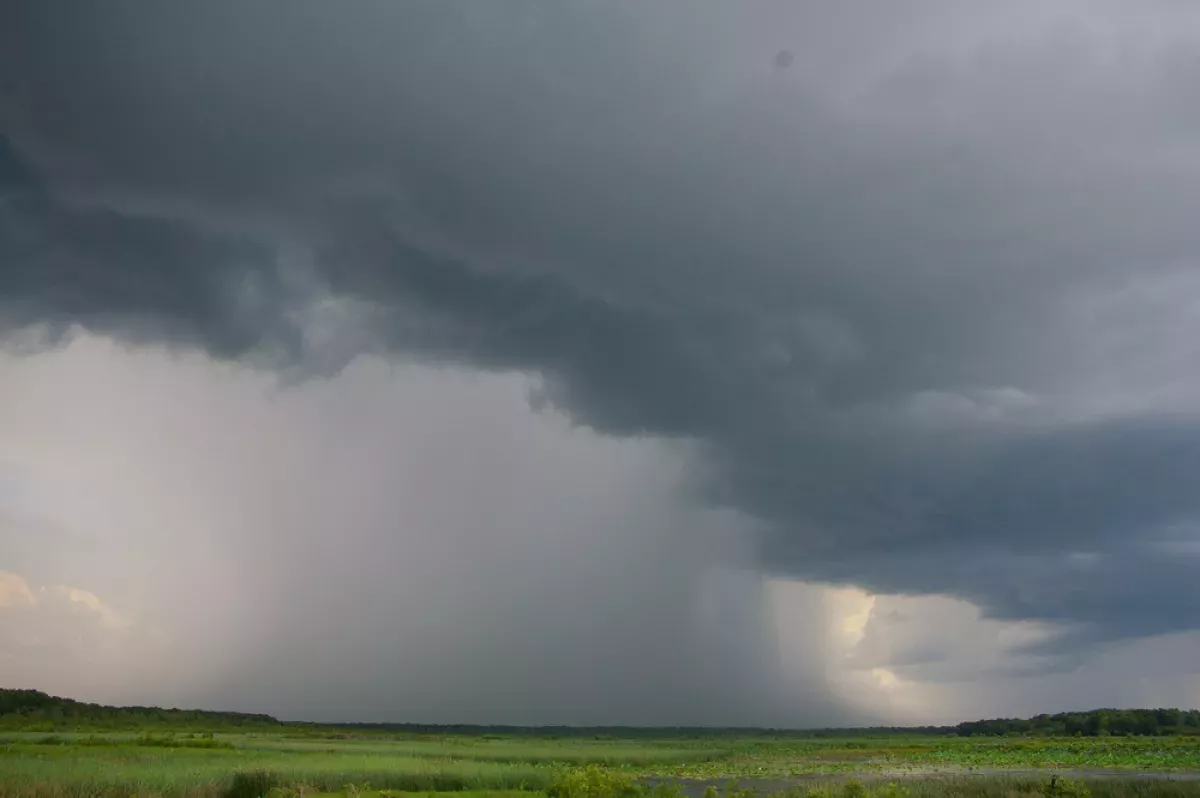Thunderstorms, also known as electrical or lightning storms, are characterized by lightning and thunder. They form in cumulonimbus clouds and are often accompanied by strong winds, heavy rain, and sometimes snow, sleet, or hail. Some thunderstorms produce little to no precipitation. They can form lines or rainbands called squall lines. Severe thunderstorms can produce dangerous weather phenomena like large hail, strong winds, and tornadoes. Supercells, a type of severe thunderstorm, rotate like cyclones. Most thunderstorms move with the wind, but vertical wind shear can cause them to deviate from this path.
1945: Energy Comparison of Thunderstorms
In 1945, it was noted that the energy released by a typical thunderstorm is comparable to that of a tropical cyclone and exceeds the energy released during the atomic bomb blast in Hiroshima, Japan. This highlights the immense power of thunderstorms.
1972: Rapid City Flooding
In 1972, Rapid City, South Dakota, was struck by significant flash flooding caused by a back-building thunderstorm. An unusual alignment of atmospheric winds led to a series of storms that repeatedly hit the same area, resulting in severe flooding and damage.
2003: Record Hailstone in Aurora
In 2003, Aurora, Nebraska, witnessed the fall of the largest hailstone ever recorded in the United States in terms of circumference and length. Such hailstones present significant hazards to structures and aircraft, demonstrating the destructive nature of hail associated with thunderstorms.
August 2004: Boscastle Flooding
On 16 August 2004, a back-building thunderstorm caused significant flooding in Boscastle, England. This rare meteorological event involved storms that continuously developed on the upwind side, leading to intense rainfall in a localized area, causing catastrophic flash flooding.
2008: NWS Discontinues 'Lightning Crouch'
In 2008, the National Weather Service stopped recommending the 'lightning crouch' as a protective measure during thunderstorms. This decision was made because the posture does not effectively reduce the risk of injury or death from nearby lightning strikes.
December 2015: Chennai Flooding
On 1 December 2015, Chennai experienced devastating flooding due to a back-building thunderstorm. The weather conditions led to continuous rainfall over the city, highlighting the destructive potential of such storms.
Mentioned in this timeline
Japan is an East Asian island country situated in the...
The National Weather Service NWS is a US federal agency...
England a constituent country of the United Kingdom occupies roughly...

An aurora also known as the northern or southern lights...
Nebraska located in the Midwestern United States is the th...

A cyclone is a large-scale weather system characterized by inward-spiraling...
Trending

1 month ago NFL Week 12 Predictions: Colts vs. Chiefs, Cowboys, and potential season-shaping games.

6 months ago Dwayne Johnson's WWE feuds, scene-stealing cameo, and streaming success in Moana 2.

2 months ago Jonas Brothers Celebrate Holiday Season with New Christmas Movie and Soundtrack

6 months ago Shannon Sharpe Lawsuit: Settlement Reached, Case Dismissed with Prejudice Amidst Courtroom Drama.

1 month ago Jeff Bezos envisions millions leaving Earth for space; Blue Origin rivals SpaceX.

7 months ago Jennifer Garner and John Miller share passionate kiss; Ben Affleck spotted solo.
Popular

Stranger Things created by the Duffer Brothers is a popular...

XXXTentacion born Jahseh Dwayne Ricardo Onfroy was a controversial yet...
Turning Point USA TPUSA is an American nonprofit organization founded...

Candace Owens is an American conservative political commentator and author...

Bernie Sanders is a prominent American politician currently serving as...

Melania Trump a Slovenian-American former model has served as First...
